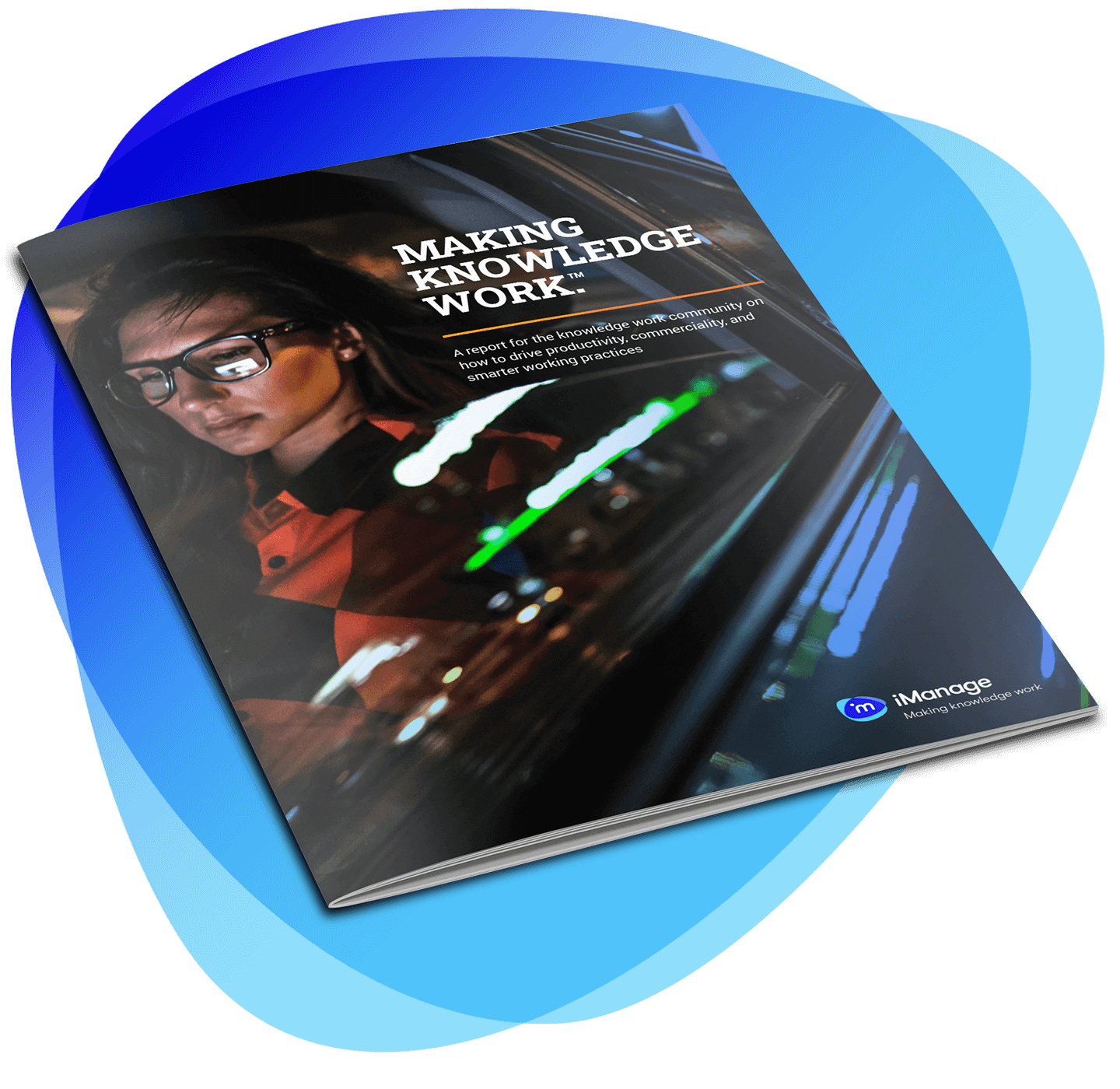What if a document is never cross-referenced, considered, discussed, or acted upon? Knowledge that is not shared or made use of is, at best, redundant, and at worst, it is lost. Therefore, knowledge can be viewed as the currency of collaboration, via the dissemination of information — either to extend its utility or to accomplish a shared goal.
Following that logic, when we share contextually enriched knowledge or wisdom, we are exchanging the currency of collaboration. Whether the exchange is made orally, through anecdotes and storytelling, or formally, through documentation such as research papers, reports, checklists, and contracts — or any means in-between — we communicate our experience and understanding of knowledge in the spirit of collaboration.
Those who use knowledge to find their edge in varying contexts across the legal profession are uniquely qualified to discuss the essence and importance of collaboration within law firms and legal departments and how innovative collaboration is unlocking new business advantages.
As part of the Canadian Legal Innovation Fund webinar series, just such an expert cohort gathered recently in a roundtable discussion, to share their knowledge on how collaboration is the new innovation.
The panel included:
- Chair: Jason Moyse, Director, Autologyx
- Kristin Hodgins, Director of Legal Operations, Government of British Columbia
- Kate Simpson, National Director of Knowledge Management & Practice Innovation, Bennett Jones
- Simon Wormwell, Chief Knowledge & Innovation Officer, Osler
- Alex G Smith, Global Legal Product Lead, iManage
Is "yet-another-meeting" the pinnacle of collaboration innovation?
In a recent analysis of the go-to-business-behaviour of meetings, The New York Times said:
"(Suddenly, there was) The 'stand-up,' the 'all-hands,' the 'check-in,' and the 'post-mortem,' to list a sampling with hyphens. And when a global pandemic precluded all but the most essential in-person congregations, humans invented new methods of meetings, no more able to resist their pull than moon-drawn waves can resist charging into shore to wreck upon its edge."
Collaboration should not be a company or organization-wide business goal or objective itself. In the quest for collaboration that unlocks knowledge, people, processes, and tech should align around a knowledge management strategy that facilitates positive outcomes.
A strategy rich with tactics that support, foster and promote collaboration helps everyone deliver against the shared business objectives of growth, profitability and end-user benefits. This is the antidote to the remote work standard forced upon us during the pandemic — and threatening to continue post-pandemic — the "yet-another-meeting" path to collaboration.
It stands up the notion that organizations need knowledge management strategies and that for company-wide adoption, there must be a culture of collaboration, not of more meetings. Some highlights of the panel discussion follow.
How do you design knowledge management strategies?
Kristin Hodgins, Director of Legal Operations, Government of British Columbia:
"In terms of designing a knowledge management strategy, I would say first of all; it's not a one size fits all model; it depends on so many factors.
You have to meet your organization where it is and develop a strategy that respects that and the culture of it. I think you have to be realistic about what is possible to achieve.
You have to take an assessment of the current state of your organization, the state of its data, the staffing and expertise that are available, and the budget to acquire any technology or expertise."
What should a knowledge management strategy look like?
Kate Simpson, National Director of Knowledge Management & Practice Innovation, Bennett Jones:
"The drivers behind why we do what we do — so that all of the programs of activity that we come up with — have to fall into one of these three buckets if you like:
So we talk about knowledge management enables efficiencies. That's it so that you don't recreate that wheel, there's no point, there's a wheel out there ― you just need to find it and tweak it to your own circumstances.
The second one is continuous improvement. So the idea that learning from others — you're standing on the shoulders of giants — and you're learning from them and improving yourself to get smarter, faster, better, which is a key part of knowledge management.
And the third one is managing risk at a global level and at an enterprise level and ensuring that we raise all the boats in the harbor and all of our clients get the very best of our collective wisdom, rather than just a single lawyer.
So those three drivers enabled me to figure out what that strategy would look like."
Where should you start with a knowledge management strategy?
Simon Wormwell, Chief Knowledge & Innovation Officer, Osler:
"I went out and had discussions with people at different levels of seniority in the practice.
I came equipped with questions to identify current state. I tried not to lead the witness. I tried to identify pain points, and I've tried to validate those pain points.
And as it turns out, all of our organizations have data available to us, even if we think that we don't. How long does something actually take? What are we doing way too much of? What's the senior person doing that a junior person could be doing? Those are things that you can actually start to quantify pretty quickly.
So after doing that, it became one of the processes that we need to improve on an enterprise-level; none of them are really surprises to the organization."
How disruptive to established knowledge management strategies was the pandemic?
Kristin Hodgins, Director of Legal Operations, Government of British Columbia:
"So I think for us, the transition was a lot easier because of our culture.
But I think more broadly, one of the issues we're starting to see is an appreciation of how much internal data we actually have, and that legal departments actually have.
We're sitting on everything from chat logs to settlement data to client activity. And the challenge is trying to figure out what to actually do with all that data to make use of it or to provide better services to our clients. And I think it's really challenging.
And one of the things we're starting to do is cross-education within our department. So we're bringing finance people into meetings with clients, we're bringing lawyers on the operation side, just so that everyone starts to understand the business a bit more broadly. And with the pieces of data that they're responsible for, I think they can start to identify some of those areas where they can provide more value."
What are the emerging challenges to knowledge management collaboration?
Alex G Smith, Global Legal Product Lead, iManage:
"Suddenly, we've got this entirely new stream of data coming online, which is chats in Teams, which previously were a water cooler conversation, or were added as comments on a Word document, but now they are a series of comments where people are talking to each other online.
By moving towards more asynchronous working, where people are doing pieces of work and then handing on, they're not talking to each other. They're leaving enough notes, and then suddenly, at a base level, that becomes something that will end up needing to go into a matter, and that will be searchable, adding a whole new world of content and information.
I'm really keen to understand what sticks as those tools are creating more information. They're creating information about the length of time that a closing will take or the length of time that people spend at a Teams meeting or kept a matter open, and then all of those become another data point."
Is collaboration in knowledge management exclusively human-to-human, or does Artificial Intelligence play a role?
Alex G Smith, Global Legal Product Lead, iManage:
"I think it's good to get a broader definition of AI, I think we get a bit stuck when we talk about AI, and it goes very much in the extraction realm. But ultimately, search is an AI tool; if you were to ask, "What's the best AI tool in the world?" you would probably say, Google.
And the other one that excites me is the knowledge graphs and how we start to connect that data together to show the meaning behind all of those data points and start to find the connections across a data set. And I think that's where it gets exciting.
But obviously, that leans a lot on good content, and then, you're into the connections between it, which to me, again, isn't going to be written by machine learning; that's going to be written by people who understand the domain and understand the knowledge and the way their organizations connect together."
Replay the full webinar
View the entire 60-minute webinar for further detail on how law firm and legal department practitioners can design impactful collaborative knowledge management strategies, implement the right processes and choose the right technology to use their knowledge to gain an edge.





